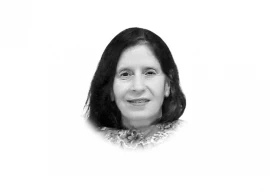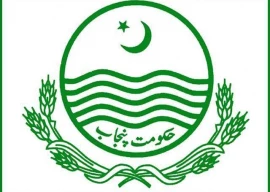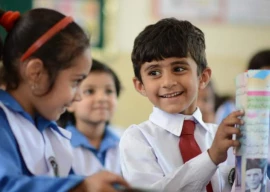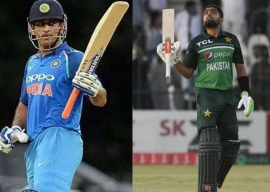
The two nation states are tied together in a grand narrative of religious difference — that one is Hindu and the other is Muslim. Once one buys into this story of essential (and insurmountable) difference, the peace and friendship initiatives flow along cliched lines. With increasing avenues of interaction enabled by the internet, these initiatives are more ‘real’ than ever before. Typically happening online, this would involve, say, a Hindu from Delhi or Bombay (two cities where rootlessness, curiously, is a cause of celebration with people only having ‘city’ identities) giving Eid greetings to his friends in Pakistan. Or a heart-warming story of a Hindu raising an orphan Muslim child as a Muslim and then marrying him/her off to a Muslim. The corresponding overtures are equally predictable. A Muslim from Lahore will give Diwali greetings to those across the Radcliffe. Someone who has researched a bit more may even come up with a Ganesh Chaturthi greeting. The problem lies in the fact that even via well-meaning gestures we seek to replicate and perpetuate ideas of difference, reducing each other to their religious selves.
Why is superficiality a problem? Let me use an analogy. There are these people in the Indian Union, who are born in high-caste Hindu families. Their privileged education makes them ‘not believe in caste’ and ‘not divide people into castes’. But ask them, beyond mouthing general humanism, can they give specifics of the lower castes — who they are, what do they know about their society and their practices. This is when these elite feel vulnerable. This fashionable and low-maintainance anti-caste position comes together with a general alienation from society at large. Atomised cities produce them more easily. That is one trap that superficial religious ‘tolerance’ and greetings at each other’s festivities may fall into.
One might question these superficial greetings and exchanges as a kind of smart-alec posturing — a shortcut to tolerance and peace-making. I am again reminded of certain characters in the Indian Union territory, who are born Hindu, are mostly atheist or agnostic, never say ‘Ram Ram’ or ‘Durga Durga’, as is customary in certain regions, but would respond to a Muslim greeting like ‘As-Salam Alaikum’ with a contrived ‘Wa-Alaikum-us-salam’. This can help the vain exhibit one’s political correctness, but for anything else, this is absolutely useless. That the India-Pakistan peace types have too many of these kinds amongst themselves is a problem. Peace-building or for that matter people-to-people contact-building mostly needs ‘people’ who are rooted in their socio-religious particularities but at the same time want to go beyond what their respective nation state narratives have taught them.
Another problem with this India-Pakistan-Hindu-Muslim-bhai-bhai thrust is the complete marginalisation of religious minorities in this model. This is particularly unfortunate given that religious minorities suffer the first brunt of violence if something goes wrong across the Radcliffe. And let’s not even start with the constant hum of religion-based persecution and violence that is perpetrated on the minorities in these two nation-states. By playing the Hindu-Muslim game, they end up excluding the already marginalised.
The other prism by which many approach India-Pakistan peace is that of commonality. I remember a picture in a leading Bengali daily that showed a series of concentric circles of increasing diameter — depicting the progressively increasing range of a missile-system from Pakistan. At first it covered the Punjab-Haryana-Delhi areas, then the middle-Gangetic plains, and in the last circle, it covered Western Bengal — my home. I should honestly state here that it is this last circle that terrified me. Call me a chicken, call me what you will, but I will unhesitatingly state that I love my life foremost. This anecdote from my teenage years is to state something that is not always obvious in the India-Pakistan peace circles — that different regions inside the two nation-states have varying attitudes towards this thing. For some it is distant or even irrelevant (a certain kind of Baloch or Naga mindset comes to mind). Some are slowly learning to get worked up about this — like certain sectors of West Bengal or Tamil Nadu. And then there is Hindustan — that vast stretch centred on the upper and middle Gangetic plains, the theatre of certain kinds of Indo-Persian encounters. One problem of this India-Pakistan commonality narrative is that this Hindustan is confused with the Indian Union and West Punjab becomes a proxy for Pakistan. From this near-racist ‘commonality’ (‘fair’ skin being an unstated bond and a proxy for ‘culture’ and beauty), especially between upper-caste Hindus and ‘sharif’ Muslims, statements of the kind that BuzzFeed Editor Rega Jha recent made arise. In this Hindustan-West Punjab love-fest, a very skewed picture of India-Pakistan commonality is produced. The wistfulness for Lahore, the regal memories of Delhi (patronised by that upstart parasite of a city called New Delhi), the commonalities between the two and all that lies in between — these things have been a source of a lot of heart-warming stories and anecdotes. This has produced, in and around Delhi, a circle of the ‘enlightened’ who turn to verses in Rekhta to bolster their ‘cosmopolitan’ and ‘refined’ sensitivities. And there is the New Delhi based mini-cottage industry of what can be called kitschy Sufism. As the Indian Union continues its long project of neutering ‘regional’ identities by marinating them with Delhi masala, the tribe of Sufism-dabblers will rise. But as of now, it is important that in the commonality project of India-Pakistan peaceniks, the ‘others’ are not sidelined. Dialogue needs to carry with it all populations — and extremely varied populations at that. There is no lasting solution between the nation states that excludes vast sections of its constituents.
If all that I have stated till now sounds a tad too critical, let me be clear that the enmity between these two nation states is not an option at all. It may be useful to remember the words of the contemporary Bengali thinker Ashis Nandy: “You can afford to choose your friends carelessly but need to be careful when choosing an enemy because, in the long run, you begin to resemble, perhaps not your enemy, but certainly as you imagine him to be.”
Published in The Express Tribune, March 13th, 2015.
Like Opinion & Editorial on Facebook, follow @ETOpEd on Twitter to receive all updates on all our daily pieces.
















1734672426-0/Untitled-(71)1734672426-0-270x192.webp)


COMMENTS (9)
Comments are moderated and generally will be posted if they are on-topic and not abusive.
For more information, please see our Comments FAQ